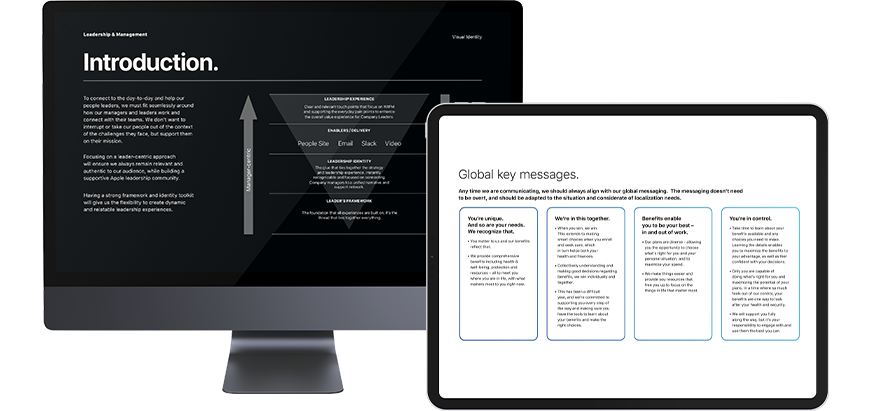It’s incredible to think that just over two years ago, the pandemic and ensuing lockdown saw many organisations pivot overnight to digital communication channels to keep employees connected and able to work remotely. Fast forward to 2023, and while the pandemic has largely receded and a sense of normality has returned, hybrid and remote working are here to stay.
The pandemic has certainly shown that different ways of working are possible, and shone a spotlight on the impact of internal communication; altering ways of communicating, as well as what should be communicated and how often. In 2020, we had to pivot suddenly, adopting a channel mix that worked ‘in the moment’. But our focus on evolving the mix has waned. Have we perfected the channel mix, or just settled for what we ended up with as a result of the pandemic?
Indeed, we’re far from perfect. According to our 2022/23 State of the Sector report, ‘channels not fit for purpose’ ranks as the second biggest barrier to internal communication success. This year’s report, which surveyed over 2,000 communication and HR leaders globally, found that over a third of respondents were dissatisfied with current channels.
From interactive email newsletters, internal videos and podcasts to employee intranets and engagement apps, how can we narrow the gap between technology’s potential and the reality of the digital employee experience?
Channel value
The growth of hybrid working has created an expectation that digital channels have the ability to reach employees wherever they are. Yet we found that fewer than three in four respondents said this was the case. While organisations with fewer than 500 employees rated their channels higher on this goal (81%), larger organisations were more likely to struggle to reach a portion of their employee audience. Furthermore, just under 60% of respondents reported a consistent channel experience for all employees. We could therefore assume that channels aren’t reaching people where they are, and the channel experience is inconsistent. This could be because communication is perhaps still taking a one-size-fits-all approach, or we’re adding new apps and platforms with the expectation that that they will solve challenges without first asking what employees want, or need.
From a technology perspective, our research found that the technical limitations faced by communicators are very real. Yet other factors can also be considered when interpreting dissatisfaction with channels. These include:
- Channel mess. Just 31% of organisations reported having a channel framework. With little to no clarity and strategy around channel purpose, it’s not surprising that the perceived effectiveness is low. Interestingly, effectiveness of individual channels was rated quite highly, suggesting that dissatisfaction is caused when trying to make all channels work together.
- Content quality. Only 33% of survey respondents reported having a channel-specific editorial calendar. This suggests that the content approach is more ad-hoc, with minimum effort going into curation.
- Perception or reality? With just 63% measuring their channel reach and 55% measuring employee satisfaction with internal communication, a question to ask is how much of the reported dissatisfaction is based on actual objective insight rather than subjective and personal perception?
Collectively these insights suggest that while digital communication channels in a hybrid environment can certainly drive a better communication experience, the value depends on how they’re implemented and used. This is why it’s so important for organisations to consider their communication needs and use digital channels strategically to support and enhance communication and collaboration in the hybrid workplace.
With such a plethora of channels and technology options out there, when it comes to recalibrating it can be hard to know what’s the right mix, including what to keep, what to let go of, or what to invest in.
Need help with your internal communication strategy?
Get in touch
Technology investment
Although nearly half of survey respondents (46%) feel that current levels of investment in communication technology are not enough, our Digital Strategy Lead Drew Munn believes that organisations can still make what they’ve got work harder for them. But to ensure existing channels are fit for purpose, it’s important to focus on understanding what you have, what they can do and how they can bring the most value.
This is where segmentation will help. Munn recommends knowing how each channel targets smaller groups to identify what’s not important. ‘This can be as simple as ensuring people only hear what’s relevant to them, or more complex, for example allowing them to choose how and where they hear it.’
Investing time and effort in understanding the limitations and potential of technology allows organisations to form stronger and deeper connections with their employee audiences – in turn, driving a better communication experience.
Segmentation and personalisation
Today’s communication technology increasingly promises to deliver an experience on par with consumer-grade marketing – where segmentation and personalisation reign. However, unlike marketers, only one in 10 communicators use audience profiles and personas to better understand who they are trying to target and engage. Promisingly, this number increases to 15-21% in larger organisations with 5,000+ employees – suggesting that larger organisations can implement more sophisticated solutions.
Our report also found that a minority of organisations enable employees to select their preferences for channels and content, even though the technology to facilitate this already exists. Addressing employees by name, or sending communications at specific points in their career (e.g. onboarding, promotion, and retirement) is implemented by fewer than 40% of businesses.
This begs the question: if we have the technology, why aren’t we using it? Perhaps it could be due to a lack of channel framework, or simply a lack of time to invest in the technology itself. Being time-poor in the modern working world is a familiar challenge, but taking time to invest now equates to time saved further down the line.
In the current era of hybrid and remote work, achieving effective internal communication through digital requires carefully balancing the benefits of technology with the need for human connection and interpersonal communication. Communicators who take this approach are poised to shrink the gap between technology’s potential and the reality of the digital experience, while simultaneously cultivating meaningful communication interactions.

